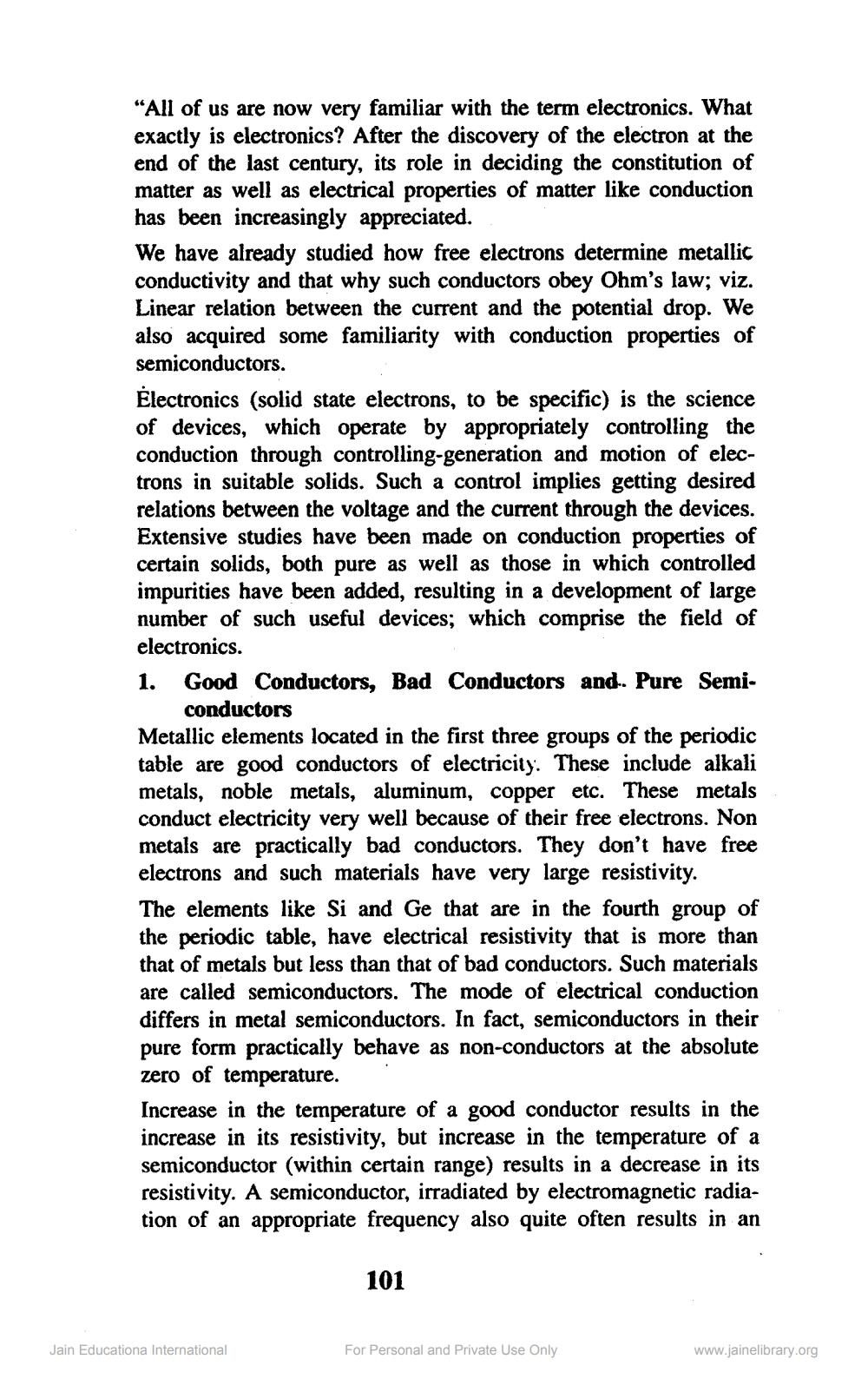________________
"All of us are now very familiar with the term electronics. What exactly is electronics? After the discovery of the electron at the end of the last century, its role in deciding the constitution of matter as well as electrical properties of matter like conduction has been increasingly appreciated.
We have already studied how free electrons determine metallic conductivity and that why such conductors obey Ohm's law; viz. Linear relation between the current and the potential drop. We also acquired some familiarity with conduction properties of semiconductors.
Electronics (solid state electrons, to be specific) is the science of devices, which operate by appropriately controlling the conduction through controlling-generation and motion of electrons in suitable solids. Such a control implies getting desired relations between the voltage and the current through the devices. Extensive studies have been made on conduction properties of certain solids, both pure as well as those in which controlled impurities have been added, resulting in a development of large number of such useful devices; which comprise the field of electronics.
1. Good Conductors, Bad Conductors and. Pure Semiconductors
Metallic elements located in the first three groups of the periodic table are good conductors of electricity. These include alkali metals, noble metals, aluminum, copper etc. These metals conduct electricity very well because of their free electrons. Non metals are practically bad conductors. They don't have free electrons and such materials have very large resistivity.
The elements like Si and Ge that are in the fourth group of the periodic table, have electrical resistivity that is more than that of metals but less than that of bad conductors. Such materials are called semiconductors. The mode of electrical conduction differs in metal semiconductors. In fact, semiconductors in their pure form practically behave as non-conductors at the absolute zero of temperature.
Increase in the temperature of a good conductor results in the increase in its resistivity, but increase in the temperature of a semiconductor (within certain range) results in a decrease in its resistivity. A semiconductor, irradiated by electromagnetic radiation of an appropriate frequency also quite often results in an
Jain Educationa International
101
For Personal and Private Use Only.
www.jainelibrary.org




